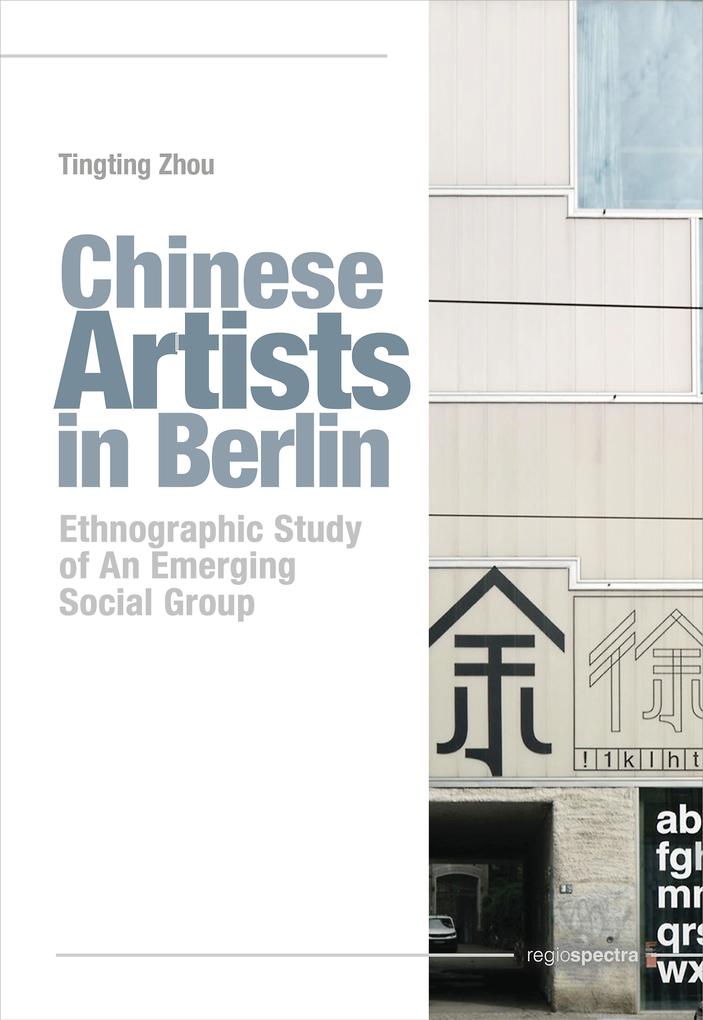In recent years, a growing number of Chinese artists and art institutions have established themselves in Berlin, often occupying a marginalized position within the local art scene and receiving limited visibility. This groundbreaking study offers the first comprehensive ethnographic examination of this phenomenon-Chinese artists in Berlin. It highlights their dual identity as "migrant Chinese" and "contemporary artists" while presenting a detailed sociodemographic profile that captures the group's fluid and non-homogeneous nature. Focusing on social relationships and group-forming dynamics, this study applies social network analysis to illuminate the motives, practices, and intricate counterforces of making a more united social group. The analyses situate their experiences within the broader framework of the art world, demonstrating how their migratory practices and networking patterns differ from other forms of Chinese migration.
This book concludes that the transformation of this social group into a cohesive community is unlikely in the near future. Despite sharing a common identity and social circumstances, these artists remain loosely connected, characterized by transnational mobility, multidimensional diversity, resistance to collective identity, internal divisions, and ongoing tensions. The absence of collective organization further fragments the group. By studying the social networks, power dynamics, and the structure of the contemporary art world, this work enriches the anthropology of art, offering valuable insights into the complexities of making artistic communities in a globalized context.
Inhaltsverzeichnis
Acknowledgments v
List of Figures and Tables xi
List of Abbreviations xiii
Part I Entering the Field
Chapter 1
Introduction 3
1. Key Conceptual Frameworks 6
1. 1 The Artists and the Art World 6
1. 2 Artistic Mobility in the Contemporary Global Art World 10
1. 3 Chinese Artists in Berlin: Networks and Social Grouping 14
1. 4 Forming Community 19
2. Ethnographic Methodology 23
2. 1 Sampling and Accessing Participants of the Fieldwork 23
2. 2 Collecting Data 25
2. 3 Gaining Insights 27
3. Book Structure 28
Part II The Field: Place, Individuals, and Institutions
Chapter 2
Chinese Artists in Migration: Theoretical and Historical Contexts 39
1. Chinese Migration A Shifting Paradigm 40
1. 1 A General Framework 41
1. 2 Chinese Migration in Germany 44
2. Interconnecting Art and Migration 46
3. Chinese Contemporary Art and Art Market 49
4. The Pioneers: Chinese Contemporary Artists in Germany Before the 2000s 53
Chapter 3
Based in Berlin 61
1. Investing in the Global Art City 64
1. 1 Urban Development and Cultural Creativity 66
1. 2 Locating Artists in the Global Art Capitals 67
2. Living as An Artist: Berlin s Art Scene and Market 71
2. 1 The Contemporary Art Infrastructure and Landscape 71
2. 2 The Art Market Challenge 74
2. 3 Social Support and Limitations 76
3. Berlin: A Place of Refuge for Chinese Artists? 79
4. Leaving Berlin: `expensive and conservative Instead of `poor but sexy ? 84
Chapter 4
Chinese Artists in Berlin: A Group Profiling 91
1. A Heterogenous Social Group: Categorization Factors 94
1. 1 Age and Family Background 94
1. 2 Time of Arrival in Germany 98
1. 3 Family in Germany 100
1. 4 Gender 103
1. 5 Education Background 105
1. 6 Forms of Art 107
1. 7 Career Stage: Emerging, Mid-Career, and `Anti-Market Artists 109
2. Migration Motivations and Transnational Mobility 113
Chapter 5
Institutional Agents 123
1. Time(s) to Say Goodbye: Times Art Center Berlin and the Fragile Configuration 127
2. Commercial Galleries: Business and Cultural Positioning 133
2. 1 Migrant Bird Space 133
2. 2 HUA International 136
3. Alternative Institutional Platforms 141
3. 1 GeKA e. V. : Culture Diplomacy Intercuts Contemporary Art 141
3. 2 C-Space and the `Spirit of Community 144
3. 3 What Art Can Do? An Observation Note 146
4. Institutional Workers: Precarious Work, `Gift System, and Network 150
Part III Social Relations and Grouping Dynamics
Chapter 6
Between the Artists: Intra-Group Network 159
1. The Studied Social Network A Visual Representation 162
2. Strength and Shapes of Ties: A Review of Granovetter s Theory 165
3. Strong Ties 167
3. 1 Close friends 167
3. 2 Semi-Institutionalized Relationships 171
3. 3 Marriage and Intimate Relationships 172
3. 4 Structural Equivalence 174
4. Weak ties 178
4. 1 Confusing Weak Ties: Ego-centric Investigations 178
4. 2 Limited Strength of Weak Ties 184
5. Social Resources Mobilization 187
5. 1 Via Strong Ties 190
5. 2 Via Weak Ties 192
Chapter 7
Cluster and Segregation Within the Group 199
1. The Principle of Homophily 203
2. Homophily Effects 206
2. 1 Age 206
2. 2 Career Stage and Social Position 209
2. 3 Gender 212
2. 4 Marital Status and Parenthood 215
2. 5 Education and Institutional Association 218
3. The Choice of Being An Outsider: Structural Constraints and Individual Agency 222
Chapter 8
Institutions as Social Foci for Group Making 229
1. Art Institutions and Artists 233
2. Cases of Individual-Institution Relationships 235
3. Institutions as Knots in the Network 246
3. 1 Event-based Relation Building 248
3. 2 Alternative Spaces for Joint Projects: Shared Goals and Interests 250
Part IV Conclusion
Chapter 9
The Unpromising Path to Community 257
1. Gemeinschaft, Revisited 259
2. The Challenges of Making A Community of Chinese Artists 266
2. 1 Being Chinese: The Trouble of Group Identity 266
2. 2 Being An Artist: China has no good artists! 268
2. 3 Being the `Other : External Threats and Precarity 271
2. 4 Heterogeneous and Weakly-Tied Actors in Transnational Mobility 274
2. 5 Constrained Resource Mobilization and Group Gathering 276
2. 6 Lack of Organizational Intervention 280
3. Final Thoughts 283
Appendix: List of Participant Artists in The Fieldwork 289
References 291
